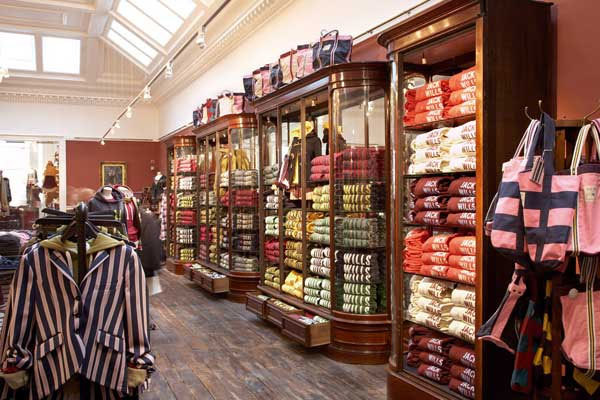Britain has never been more popular internationally, with Downton Abbey, London 2012 and even the royal baby announcement attracting attention the world over.
British brands are associated with a time-honoured tradition and a world-beating heritage stretching back centuries, from the tailors of Savile Row to the whiskey distilleries of the Scottish Highlands. This “Brand UK” has always been strong in the US, due to the cultural ties of a shared language, but is now making strong inroads into emerging markets. UK brands looking to use this to increase exports should remember a few key elements if they‘re going to succeed overseas.
Digital first
British luxury brands are far from stuck in their ways – Jack Wills uses social media to fantastic effect, by rejecting traditional advertising in favour of engaging directly with over one million followers across Facebook, Twitter and Instagram. Meanwhile Burberry streamed its autumn/winter Womenswear show to an audience of 181m, including many in emerging markets. To tap into a growing international customer base, retailers should take a digital-first strategy to emulate the leading UK brands and reach customers directly.
Local preferences
Websites should be offered in the local language at a minimum, and retailers should also respect national preferences. German shoppers have a low adoption rate for credit cards, for example, while many Scandinavians prefer to pay cash on delivery. The best way to address these idiosyncrasies is to work with a partner who has international experience. Some markets in particular, most notably China, are extremely difficult to enter unless you can call upon local experts to give you the insights and guidance needed to accelerate market entry.
Phased approach
Retailers are excited by the increasing international demand for British goods and falling barriers to international trade, but new market entry should be seen as an opportunity to build a presence, not a gold rush. For many this means beginning by shipping online orders to a new market, before phasing in a physical presence. In-store fulfilment methods like click-and-collect and ship-from-store can then enable retailers to establish a further localised e-commerce presence without the need for an up-front investment in a distribution centre.
Local knowledge is crucial, and working with a partner allows retailers to focus on their overall growth strategy by outsourcing elements of the online business. For example, eBay Enterprise works with luxury British brand ACHICA to help their cross-border sales, and manages the entire fulfilment cycle from warehousing, to shipping, handling carrier relationships and co-ordinating returns.
Will Cooper, Co-founder and CEO, ACHICA, said, “Every European country presents its own unique fulfilment challenges, and our business uses a particularly complex distribution model. eBay Enterprise‘s expertise, technology and scale has helped us to successfully set this model up in multiple markets in a short time-frame; we couldn‘t have done it without them.” Brands looking to expand abroad need to take into account these local fulfilment issues and adapt their service accordingly.
Britain has the third-largest e-commerce market in the world, and has produced luxury brands that are household names from Singapore to Shanghai, Christchurch to Chicago. Retailers can build on this track record by taking a digital-first approach, tailoring their offering to local markets and focusing on medium-term growth. If brands follow this advice, then the sun may never set on Britain‘s retail dominance.
Tobias Hartmann, VP & GM Enterprise Services and International, eBay Enterprise


















